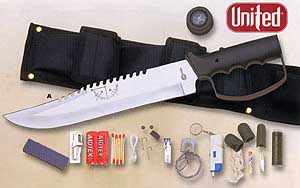Introduction to Aquaponics
Aquaponics is the latest buzzword in the world of self-sufficiency, and it's something that more and more people are looking at for their home food production plans. Gardens and chickens are no longer unusual, and people are starting to tackle even more complex projects to bring their own home-grown food to the table. If you're looking to branch out a bit, this might be the challenge you're looking for.
First of all, what exactly is aquaponics? It sounds a lot like hydroponics, but there is another level added now that includes fish. Plants are grown in a controlled situation (either in soil, other mediums or directly in water) just like standard hydroponics, but you add in a tank of fish to create a more complete natural cycle. Fish waste water is loaded with chemical nutrients that the plants need (basically, it's liquid fertilizer), so the water is pumped between plant and fish parts of the system. The plants soak up the nutrients, leaving cleaner water to back to the fish tank. Each half compliments the other.
For a someone looking for a self-sufficient lifestyle, this is a great partnership that can provide your family with fresh produce as well as farmed fish. With the ongoing worry about GMOs and water pollution, why not bring both foods under your own control for a safer and healthier harvest? Once set up, you can also start to save money with your home-grown fish and produce.
If you are familiar with standard hydroponics, then you are already ahead of the game. The only difference is that the water system is shared with living fish along with your garden of plants. In hydroponics, you can adjust the nutrient levels and water chemistry to perfectly suit your plants. But now you have to take care that those adjustments aren't going to be harmful to the fish. It's a more delicate balancing act.
Pros and Cons
One of the biggest cons with aquaponics is the complexity. While it's actually simpler than you probably assume, it's still going to take some effort to get a working system in place that suits both your plants and your fish. Along with this is the size of an aquaponics system. A few pots of plants for an indoor garden is one thing, but when you add tanks for fish, it can start to take over the room.
Cost can also be a negative factor, but that is usually only the case during initial system setup. Once you have the equipment purchased, there is far less ongoing cost involved. You can earn back your investment in food harvest soon enough, especially when you consider the price tag of buying healthy organic foods at the store.
The best positive aspect of hydroponics is the fact you can produce your own food, in a natural and controlled environment. Fruit and vegetables can be grown without risk of pesticides or unpleasant chemical fertilizers, and your fish isn't going to be heavy with mercury or other heavy metals. Not to mention, you can do all of this in the comfort of your own home.
Types of System
A very general type of aquaponics system is easy enough to understand. You have a bed of plants, in whatever growing medium you have chosen to work with, and a tank of fish. Water from the fish tank is pumped through the system to flow through the plant beds, where it keeps the plants healthy and then the overflow water returns back to the fish tank. The "dirty" tank water is loaded with nitrogen and natural fish waste, which is a great fertilizer for your plants. The soil and roots filter out the water to a degree, so the water is "cleaner" when it returns to the tank. Both fish and plants benefit, leave you with a healthier harvest on both halves of the cycle. That's the main gist of it. The mechanisms and engineering details can be as varied as your imagination.
Most of the variation tends to fall on the plant half of the system. You may choose to have your plants floating in their water with no soil or media at all, or you can use beds with soil or other types of substrate material. In either case, you will likely have an "ebb and flow" approach that has a timer to periodically run the water through the system. Ignoring the smaller variations, these are the 2 general types of systems.
One note, the well-known NFT system (nutrient film technique) is fine for hydroponics but the constant flow of water makes is far less suitable for an aquaponics system. So don't be surprised that it's not mentioned again here.
Ultimate Survival Knife & Kit |
List Price: 61.99 Our Price: 39.95 |
This 15 inch survival knife with drop point blade features a thick quality stainless steel blade with serrated top edge. Textured and ribbed solid metal handle and guard. Nylon sheath. Survival kit includes a hollow grip with a compass top to store items within the knife itself, as well as additional pouches on the sheath to hold the rest. Complete survival kit. Click Here to Buy the Survival Knife Now. |
|

